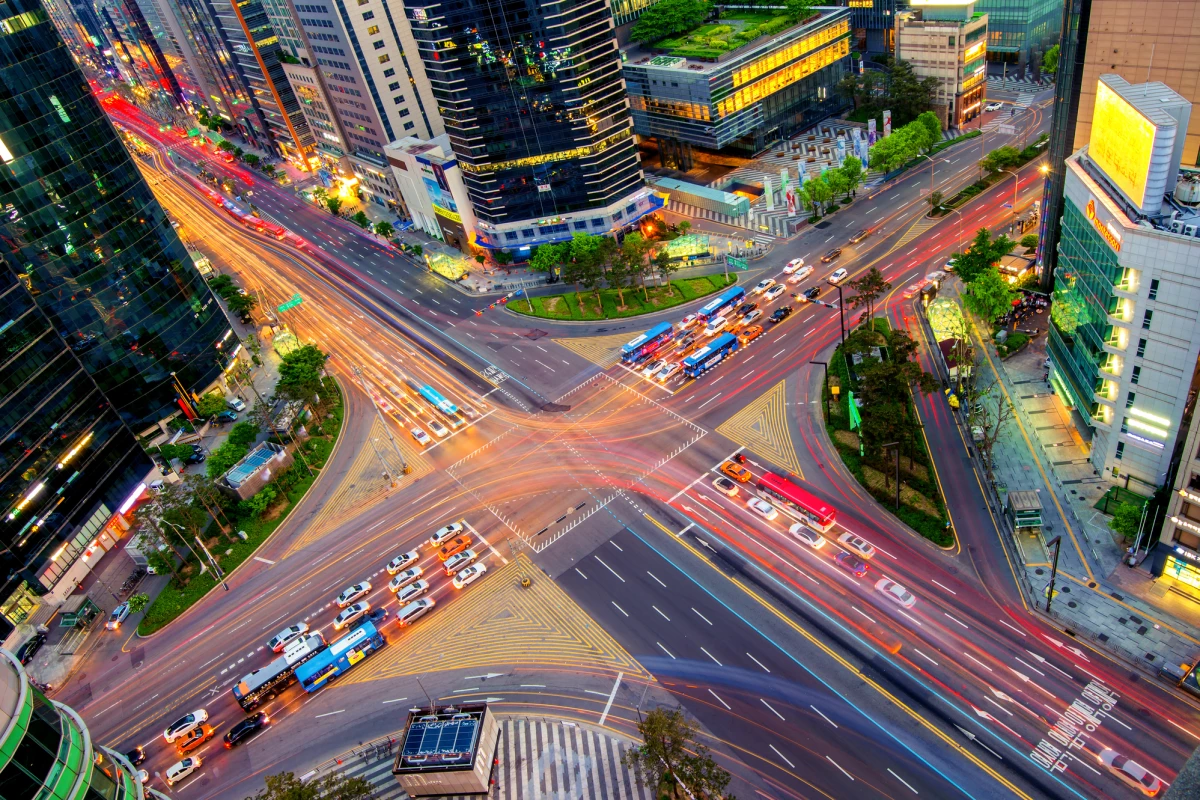In order to optimize traffic flow, many autonomous vehicles communicate both with one another and with municipal traffic control systems. Scientists are now suggesting that an extra white light at controlled intersections could help incorporate human drivers into the mix.
First of all, as long as autonomous vehicles (AVs) remain a rarity, the ol' green/amber/red traffic light system probably works best – no need for an extra color. Assoc. Prof. Ali Hajbabaie and colleagues at North Carolina State University, however, believe that could change as AVs become more common.
That's where the "white phase" comes in.
The idea is that as groups of AVs are approaching an intersection, they will communicate with one another and with the computer running the lights at that intersection. In order to get through the intersection as quickly and efficiently as possible, all of those AVs will coordinate their movements – a certain number of cars going in one direction will wait, while a certain number of cars going in the other direction will pass through.
During this phase of traffic flow, the traffic lights will be changed to white. This will let drivers of non-autonomous cars know that right-of-way is being dictated by AV traffic, and that all they need to do is simply follow the car in front of them – if it stops, they stop, and if it goes through the intersection, so do they.
At that same intersection, when the vast majority of approaching cars are not AVs, the lights will revert to their standard green/amber/red routine – the white light simply won't illuminate.
According to the scientists, computer simulations based on real-world traffic flow show that the idea definitely has some merit. In some cases, for instance, the white phase could reduce traffic delays by over 90%.
"The simulations tell us several things," says Hajbabaie. "First, AVs improve traffic flow, regardless of the presence of the white phase. Second, if there are AVs present, the white phase further improves traffic flow. This also reduces fuel consumption, because there is less stop-and-go traffic. Third, the higher the percentage of traffic at a white phase intersection that is made up of AVs, the faster the traffic moves through the intersection and the better the fuel consumption numbers."
That being said, he adds that even in scenarios where just 10% of the cars at an intersection were autonomous, the white phase still reduced traffic delays by 3% – and the light wouldn't necessarily have to be white, just some agreed-upon fourth color.
A paper on the research was recently published in the journal IEEE Transactions on Intelligent Transportation Systems.
Source: North Carolina State University




